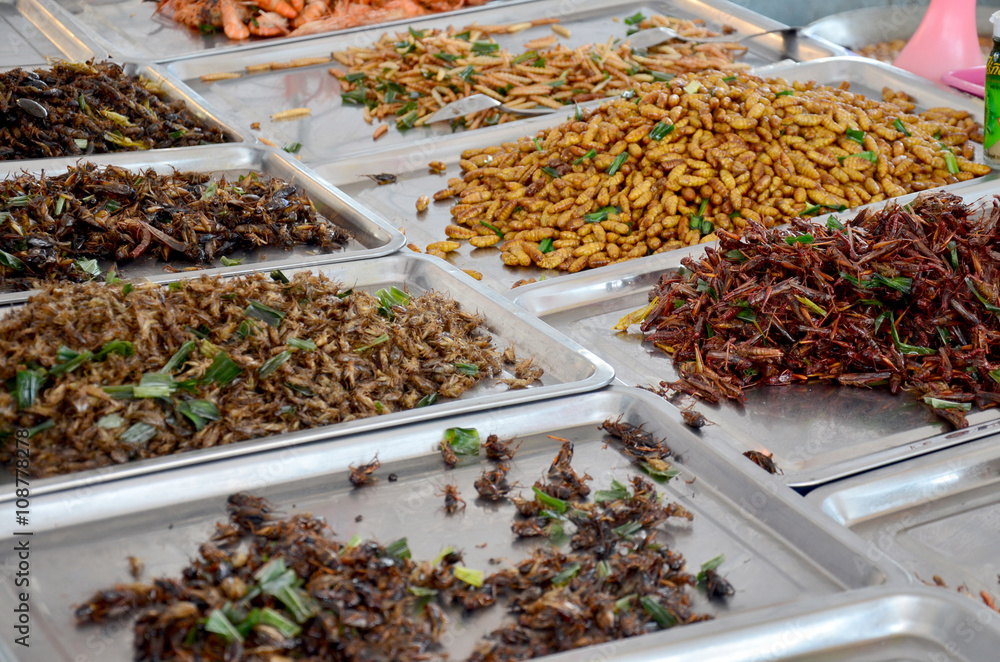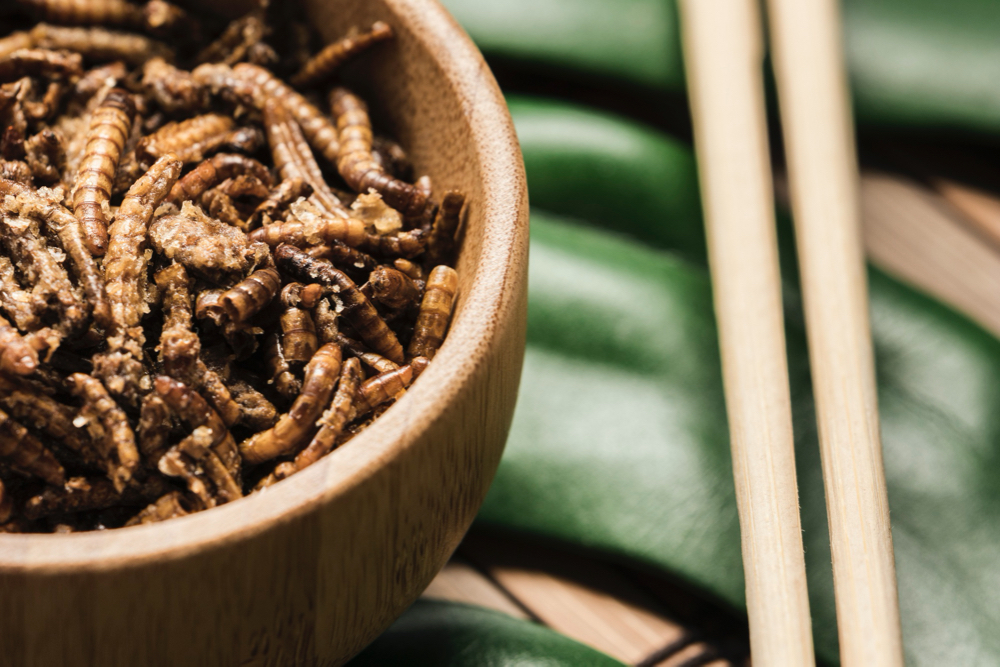Interest in entomophagy, or the consumption of insects as food (entomos = insect; fagus = to eat), has grown in recent years due to the many benefits reported in nutrition and the environment (Dion-Poulin et al., 2021). Insect production as food, compared with conventional livestock, supposes lower greenhouse gas emissions (1000–2700 g fewer GHGs per kg of mass gain), better feed conversion efficiency (40– 80% less feed), and less land (50–90%) and water use compared to livestock, which currently already utilizes 70% of the arable land (Steinfeld et al., 2006; Van Huis et al., 2013, 2015; Van Huis & Oonincx, 2017; Youssef & Spence, 2021). In addition, the nutritional richness of insects makes them a good protein alternative that can be used to solve the challenge of supporting the growing need for food in 2050, where a world population of at least 9000 million people is expected and at least +75% protein will be needed to satisfy the consumption preferences of the population (Rumpold & Schlüter 2013; Van Huis et al., 2013). Despite the advantages of insects as food, a challenge to overcome with consumers is the emotional disgust barrier and several factors associated as food neophobia, lack of information, the image of insects as an emergency diet in case of food shortage, or a diet for poor people (Castro and Chambers IV, 2019a; Ordoñez-Araque & Egas-Montenegro, 2021).

It is well known that the food choices we make, more than a physiological need, are associated with cultural and social aspects and that what we consider healthy/good or unhealthy/bad food depends on a process of socialization we start with our family and community early in life (Nyberg et al., 2020). Furthermore, the election of food and lifestyle depends on economic, political, cultural, and associated infrastructure aspects; for these reasons, it is necessary the understand consumers’ necessities (Casas-Rosal et al., 2021). Entomophagy is repeatedly reported as an accepted practice in some countries from Latin America (Mexico and Brazil), Africa (South Africa), Asia (China), and Oceania (Australia) (Ordoñez-Araque & Egas-Montenegro, 2021; Youssef & Spence, 2021). In Mexico, according to Ramos-Elorduy, there are around 549 edible insect species (Ramos-Elorduy et al., 2008; Ramos-Elorduy et al., 2012), one of the highest numbers recorded worldwide (Van Huis et al., 2013; Youssef & Spence, 2021) and associated with the remarkable biological diversity of this country (ranked fifth in the world diversity) (Cetina-García, 2015). Anthropoentomophagy in Mexico is a pre-Hispanic tradition and is perceived in other countries as widespread among the population (e.g. Van Huis et al., 2013; Cetina-García, 2015). Nevertheless, this practice has not been widely studied, and the motivators or incentives for the consumption acceptance or not acceptance of insects as part of a diet remain unknown. Castro and Chambers IV (2019b) surveyed individuals from 13 countries to understand the main reasons for not eating insects. Negative beliefs like ‘The idea is disgusting’, ‘Just the thought makes me sick’, and ‘Insects are not safe to eat’ were important in preventing insect consumption. However, people from countries such as Mexico and Thailand, where insect-based products are already known, did not show significant negative beliefs associated with the insertion of insects into their diets. In another report by Castro and Chambers IV (2019a), people from eight out of 13 countries were unwilling to try insect powder products. However, more than 70% of Mexico’s respondents who participated in the survey were willing to consume insect-based foods, corresponding to the highest value in the study (Castro and Chambers IV, 2019a). The authors mentioned an excellent opportunity for companies to create new insect-based products for countries like Mexico with increased acceptance for consuming insects.
It is essential to clarify that in these last two references (Castro and Chambers IV, 2019a; 2019b), the number surveyed per country (including Peru, Spain, Japan, the United States, Brazil, United Kingdom, India, and Australia, besides Mexico) was 630. In the case of Mexico, it is not clear in which region of the country the study was carried out. Being Mexico the tenth most populous nation in the world, with more than 126 million inhabitants in 2020 in 1 960 646 million km2, divided into 32 states with great socio-cultural diversity (INEGI-Instituto et al. y Geografía, 2022; Nation Master, 2022; Roser et al., 2022); it is important to have representation not only by age range and gender (reported by the authors of the study) but also by geographic region.
A study of these characteristics will give us a better idea of how accepted the practice of consuming insects is among the population of an ambivalent country about this topic (Cetina-García, 2015; Katz & Lazos, 2017). This is because, on the one hand, Mexico has a tradition or reports of insect consumption as traditional, anchored to its indigenous heritage, but, on the other hand, it receives significant influence from international trade, information and customs, reinforced or strengthened by the 3152 km of the border that it shares with the United States of America, the greatest economic power in the world (330 million inhabitants and 9.6 million km2 of surface) (Nation Master, 2022; Roser et al., 2022). These characteristics make Mexico an interesting sample country to explore the drivers or motivators that can increase the consumption of insects in people’s daily diet. Furthermore, data could be obtained to create strategies for product development or schemes to use insects as food, with the nutritional and environmental benefits that this entails.
In the present study, a survey was carried out in Mexico, including three geographical regions, to learn more about the individuals who consume or do not consume insects in this country, including some valuable data addressing demographic traits associated with entomophagy. Besides, we explore in-depth the share of the Mexican population that consumes insects. Furthermore, we asked them about the frequency and reasons for consuming insects and the primary triggers they noted that could enable the insertion of insects as part of our regular diet.
Do you want to know more about our study? Click Here!


